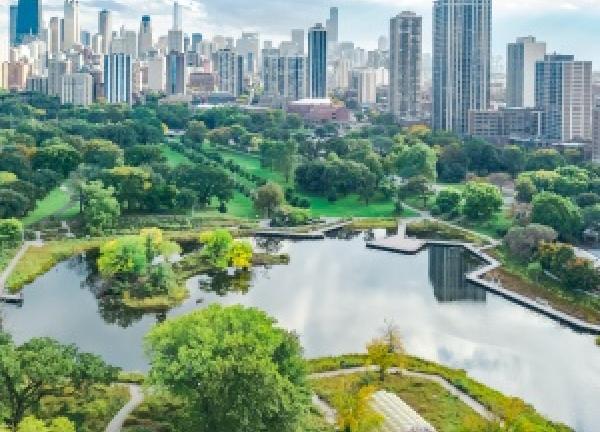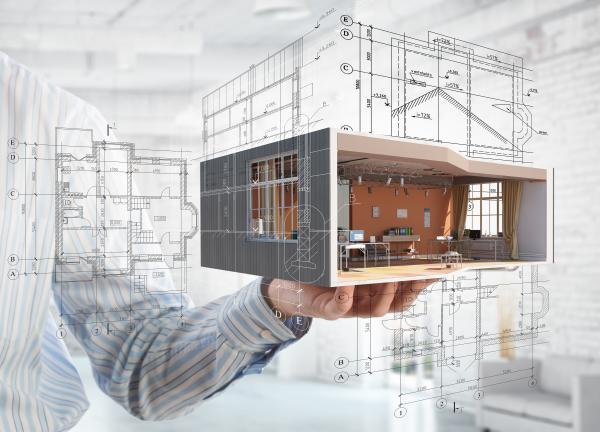Construction facing the challenges of climate change
Heat waves, storms, flooding – all around the world, climate change is causing increasingly intense and frequent weather events. These are having wide-ranging impacts on the planet, inhabitants and, of course, our buildings! So, how do we build or renovate while taking climatic uncertainty into account?

Climate risk requires a new approach to construction through the systematic use of sustainable solutions, in terms of glazing, insulation, façade, structure and airtightness.
There can no longer be any doubt – global warming has begun and the Intergovernmental Panel on Climate Change (IPCC) is sounding the alarm. According to its latest report, natural disasters will increase all around the world by 2050, including flooding, heat waves, hurricanes, etc. As well as its impact on the environment and inhabitants, climate change is calling into question the vulnerability of our buildings and their ability to withstand increasingly intense and frequent events. All countries are affected, both in the northern and southern hemisphere, tropical countries and temperate zones. That is why building in response to climate change is no longer simply an option but an imperative, to be taken very seriously when building the world of tomorrow. This raises several questions: How can buildings be adapted to the climate? What construction solutions can be used? What renovation options exist?

Insulating to protect against extreme temperatures
In the near future, extreme temperatures could become common, even in usually temperate zones. That is why the insulation of the building envelope is becoming a crucial element. More particularly in Near Eastern and South-East Asian countries, which will have to learn how to improve management of air-conditioning. “It's an important issue to consider, because as temperatures are rising there is a corresponding increase in the demand for electricity – particularly to cool the air – which is becoming scarcer and more expensive, due to a decrease in the government subsidies that have kept prices low for decades,” warns Gilles Leva, Deputy Vice President Marketing & Development at Saint-Gobain. “Everywhere, consumption is exploding, leading to galloping inflation.” So what can be done to effectively protect against heat waves, while limiting demand for air-conditioning? Attention will turn to proper insulation of the building envelope and glazing. Hot countries, for example, will need to switch to double-glazing and even increasingly to dynamic glazing, capable of automatically adapting their tint to the sunshine, thereby increasing occupants’ comfort without obscuring the view. In any case, that is the feat offered by SageGlass, created by Saint-Gobain.
TO READ: "CONSTRUCTION: THE HOT ISSUES AND CLIMATIC CHALLENGES IN THE MIDDLE EAST"
The choice of materials will also become crucial. Instead of glass, cement and concrete, preference will be given to reflective coatings, to reflect heat upwards, as well as light-colored materials and green façades, which avoid excessive heat building up during the day and release it during the night.
Whether the country is hot, temperate or tropical, the challenge will also involve eliminating thermal bridges and ensuring excellent airtightness, which in turn requires dual-flow air renewal in order to guarantee the air quality inside homes.
Hurricane-resistance of materials
In addition to extreme temperatures, storms and hurricanes are another proven risk. Strong winds can cause significant damage to roofs and façades. To limit exposure to the wind, players in the construction sector will need to pay particular attention to the resistance of materials and systems. Out goes the traditional system for insulating houses and small buildings from the outside, using render over polystyrene insulation! Being far too light in the event of strong winds, this type of insulation is already banned along the Norwegian coast. There, buildings are equipped instead with ventilated facades, comprising a wall, insulation, an air gap and cladding, held in place with reinforced metal fasteners. There are many advantages to this solution: the armor-like cladding acts as a barrier, while the air gap protects the insulation and maintains the health of the walls.
Since these weather events are often accompanied by heavy rainfall, they also raise the question of the façade cladding. The more watertight it is, the longer the structure will retain its integrity. Renders such as Weber's Aquabalance 2.0 also effectively combat stagnant humidity on the wall and the spread of moss, without the use of biocides. “At the same time, in countries where timber-framed buildings are traditional, the ground floor is increasingly built solidly, to better withstand humidity and even flooding,” adds Gilles Leva.
Rarer but just as devastating, seismic risk should not be overlooked. This again calls into question the structure of the building and, more specifically, its flexibility and lightness. In this case, there is no question of using heavy materials, which could cause major damage. The idea instead is to make the building more flexible, to accompany the movement – a bit like a reed that bends without breaking. In Japan, for example, the wooden structures of buildings incorporate an ingenious system of cables. Normally, the cables are stretched to maintain the rigidity of the overall structure. But if there is an earthquake, the cables are released so that the building becomes more flexible and moves with the tremor. “Let there be no mistake! The notion of light structures is not incompatible with the notion of resistance,” explains Gilles Leva. “Quite the contrary! Wood and metal structures have many qualities when it comes to withstanding violent events. Furthermore, they make it possible to build, demolish and rebuild more quickly and in a virtuous way.”
While the scale of climate change imposes new construction standards, it also requires in-depth reflection on the renovation of buildings. Solutions such as double/triple glazing, protective render and cladding are easy to implement. Insulation and thermal comfort can also be optimized at a reasonable cost by using prefabrication. The German company Bruggemann, for instance, has developed external insulation that acts like a second skin, sticking to the new walls of buildings.
TO READ: "FACT-CHECKING THE SUSTAINABLE CITY"
In addition to renovation, however, it is clear that a new approach is needed to the city as a whole, as well as to our approach to construction, in order to address the challenges posed by climate change. This requires the construction of more natural cities, featuring modular, reversible buildings, designed for the multitude of future uses.
Crédits photos Tom Wang/Shutterstock et Roman023_photography/Shutterstock




